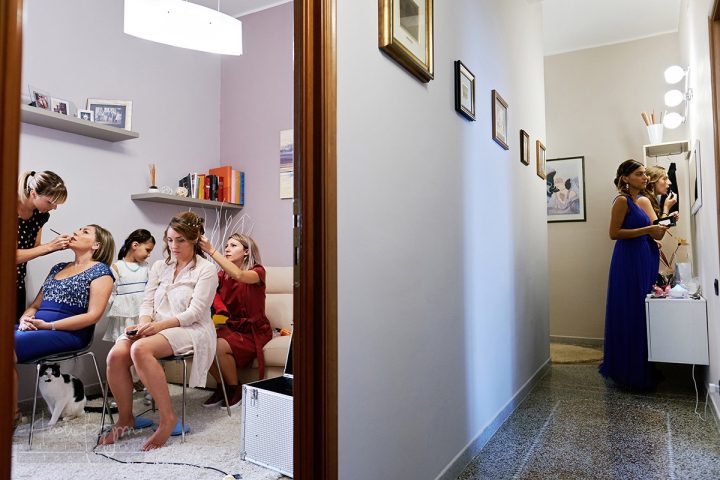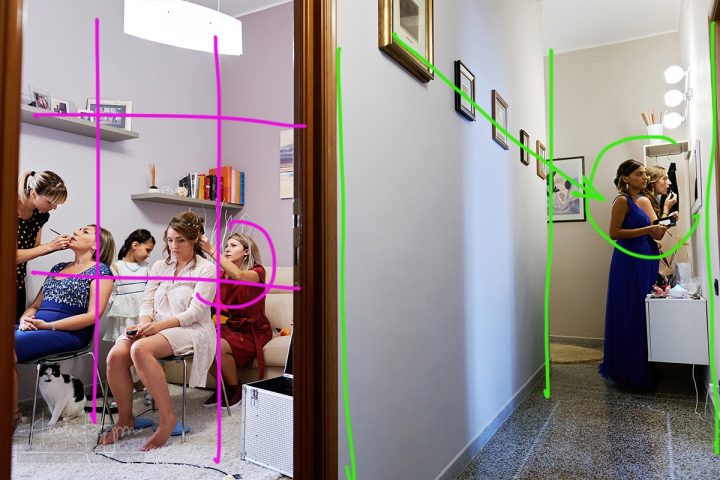The Fuji X System: Thoughts of a Professional Wedding Photographer
Documentary Wedding Photography
Hello all and thank you Patrick for hosting me on your very popular Fuji Rumors website, my personal site of reference for all things Fuji.
My name is Andrea Bagnasco and I’m a professional wedding photographer based in Italy. I work in a documentary style and have been shooting weddings for a living for the past 12 years of my life. I won’t take anymore room on this post to write about me as there’s already a lot of information on myself and my work on the web. So please visit my website (link to the English version) https://www.andreabagnasco.it/en/ and follow me on instagram https://www.instagram.com/andreabagnasco/. A heartfelt thanks in advance and I very much look forward to that!
Fuji X system and documentary photography
As some of you may recall, I already made an appearance on Fuji Rumors a couple of years ago, when I wrote about how I made my transition from a full-frame DSLR system to the Fuji-X system for my wedding photography (see the old post here https://www.fujirumors.com/fuji-x-t2-documentary-wedding-photography-now-can/). That was back when the X-T2 was introduced. The first mirrorless APS-C camera that gave me enough confidence on the field to ditch my heavy Canon bodies and lenses and rely on a compact and lightweight system that could de-facto replace full frames for the purpose of documenting the day of my clients, without missing shots and without leaving any perceptible quality of the delivered product on the table.
Even back then, it was clear for me that for wedding photography DSLRs were a thing of the past and that mirrorless cameras would have taken over this market, which in fact they are in the process of doing. Since then, many of my colleagues migrated to Sony, others – like yours truly – to Fuji. I had the chance to test drive a couple of Sony full frame mirrorless cameras and I have to say I was impressed, but… Of course, there’s no arguing over the technical qualities of these cameras (and I am not here to start pointless discussions on which is the better system), but I need to mention that whenever I had to process Sony files along with the files from my X-T3s this past season (e.g. in all cases when my second shooter was using Sony’s) I didn’t feel limited during editing by the Fuji files, nor perceived any tangible difference in quality of the finished product, after both type of files were put through my standard workflow. So I happily enjoy the lesser weight and smaller size of my Fuji lenses!
Inside the picture taking process
Anyhow, back to the point of this post. I thought it would be interesting to share some of my work and provide some thoughts about the gear and technical aspects behind each image. It would all be very much related to my own way of working, so I wouldn’t claim any of my thoughts to represent the ‘right’ way of doing things. More like the way it works for me. Still, I think this type of content can provide food for thought for anyone interested in taking pictures with a Fuji X series camera and good matter for discussion. So you’re very welcome to chime in the discussion here in or get in touch directly if you have any specific questions.

This double scene with cat is from Celeste’s getting ready. I love to use a wide angle lens when the situation calls for it. All it takes most of the time is to get the camera off of my face for a moment, take a step back and observe what is going on around me. These are the photographs that provide a true sense of the place and of what is going on at one particular moment. People’s attention is mostly focused on single things, so these are images that usually get my clients involved and interested, at the very least to see what they missed during the day.
From the photographer’s side, a photograph like this requires a bit more of patience than usual to wait for the all the elements in the composition to fall into place nicely, where both scenes should make a good composition in their own right. In this particular case, I have a vertical composition on the left, where the bride is getting her hair done and the margins are given by the door frame, and a square picture on the right, with the bridesmaids doing their own makeup.

The vertical composition on the left rotates around the action on the bride’s hair, that is placed on the lower right third of the frame. There are 5 people and a cat inside the room and it was crucial for me to wait the right moment, when everyone was clearly visible and not hindered by other subjects and possibly when everybody would work as a organic whole to tell the story of what was going on. The cat of course was a nice plus and a further variable to control as it didn’t sat still the whole time I was observing the scene.
The square picture on the right works really well to direct the viewer’s attention to the bridesmaids, also thanks to the line of frames hung on the wall drawing a straight line pointing right to the subjects. Here as well I had to wait until both bridesmaids would be visible and nicely working as a whole, as most of the time the blonde bridesmaid putting on lipstick would be hindered by the bridesmaid on the foreground. The black shirt hung in the wardrobe in the very background provides a nice dark backdrop to the light bridesmaid’s profile, making it stand out and providing better readability to the scene.
Needless to say, getting both sides of the composition to work was not easy. Sometimes it’s a matter of seizing a very fleeting moment, so I’d better be prepared with my index finger on the shutter button and keep my eyes peeled!
With shots like this there’s so much going on demanding my attention that the easier the technical aspects of taking the picture, the better. For one thing, there’s no way to screw up exposure with a mirrorless camera. And that’s a lot! Especially in cases like this with all sorts of mixed light, both in intensity and color. Here there are 4 different light sources: a window and overhead artificial with magenta cast inside the bride’s room, a window from another room and artificial overhead with a cyan cast in the corridor on the right.
One thing that I love about my FujiFilm X-T3s is the ability to pretty much nail the right white balance every time, even in nightmare situations such as this one. They manage to find that elusive setting to smooth out nasty multiple color casts and work best with skin tones. In this case I did a bit of tweaking in post production, where I made a quick local WB adjustment with the brush in the left part of the frame, to nail the right colors in both sides of the picture. But I would probably have been completely happy with the white balance set by the camera if I were in a hurry, and even more so if I decided to go for black and white.
Second praise to the Fuji system here goes to the wondrous Fujinon XF16mmF1.4 R WR, and anyone in their right mind familiar with this lens can’t but rate it as a top performer in any category. An absolutely stellar lens with almost no optical defects. It doesn’t distort, sharpness is fantastic corner to corner, even wide open. Colors and contrast are great, it focuses at practically no distance, bokeh looks great (yes, bokeh for a 16mm – try focusing on a detail wide open at minimum distance and you’ll let me know about the blurry background). It’s a lens that allows you to explore your creativity without having to worry about technical limitations. The times when I used to worry about aperture and where I placed my subjects when using my Canon 16 – 35 f/2.8 are long gone!
The metadata of this photo says f/2.5, 1/125 sec, 1600 ISO. I mean, look at the detail, corner to corner… f/2.5. Unreal.
One last thing I should mention is how I had to crouch down to take this picture, as I really wanted to get all the vertical lines of the wall and doorway nicely vertical and parallel. Again, we are talking about a 24mm equivalent field of view, but the lens is still optically a 16mm. So look at the (lack of) distortion and judge for yourself.
Fuji X system as a powerful means of expression
So the conclusions are that the Fuji X system can be a very powerful means to explore creativity without feeling technical limitations. I might have taken this picture with my Canon cameras as well, but I’m sure the process would have been a lot more painful and the outcomes not as technically brilliant. So not only the Fuji X system was a way for me to free myself from the weight and bulkiness of full frame DSLR’s but it’s becoming more and more a means to develop my photographic vision.
If you found this interesting, please let me know and I’ll give you more! I look forward to your questions!
Also, I’m providing you here with Amazon links to the gear that I used for this shot. If you fancy buying any of this stuff and you do it through one of these links I’ll get rewards from Amazon to help pay for my time to write these posts. Thank you in advance for that!
Cheers,
Andrea
Link to my Amazon.com storefront: https://amzn.to/2N7H2Gt
The camera for this shot: FujiFilm X-T3 | buy here: https://amzn.to/2p4kBK7
The lens for this shot: Fujinon XF16mmF1.4 R WR | buy here: https://amzn.to/33QxztJ
Accessories:
Meike grip for X-T3 | buy here: https://amzn.to/31El5E6
Hoya filter (life saver) for XF16mm lens | buy here: https://amzn.to/35VXLFc
Leica camera strap | buy here: https://amzn.to/2W6wZpe


